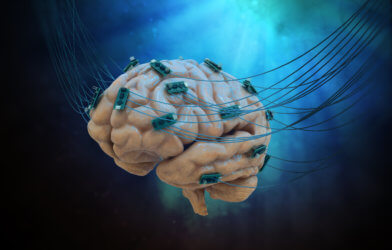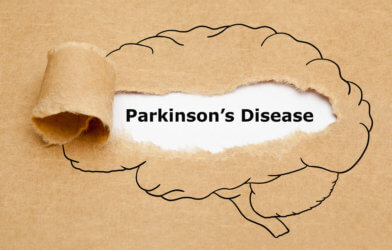Many brain disorders, like stroke and depression, are associated with over- or underactivity of some parts of the brain. Transcranial magnetic brain stimulation (TMS) has been used to treat brain disorders for years. Much of the success of the treatment has relied on the skill of the operator of the device, therefore it is subject to variable performance. Recently, a research team at Aalto University in Finland developed a new way to quickly determine the best stimulation for each individual.
TMS sends magnetic pulses to the brain via a coil placed on the head. These pulses either decrease or increase how the neurons (nerve cells) in the brain communicate with each other. Electroencephalography (EEG) detects electrical activity in the brain induced by the pulses. Then, the newer method uses an algorithm that instantly and automatically assesses and adjusts to the optimal stimulation placement.
‘We’re basically measuring what happens in the brain immediately after each pulse. Based on the brain’s reaction in the first tens of milliseconds, our algorithm will adjust, in real time, how the next stimulation pulse is given, explains Aino Tervo, a doctoral student at Aalto, in a statement. “Because we can find the optimal stimulation direction quickly, the method has real potential to improve the quality of TMS treatment.
Currently, transcranial magnetic brain stimulation operators must manually find the best stimulation location and orientation for each patient’s brain. It’s slow and outcomes are inconsistent, subject to the operator’s training and experience. The TMS operators locate areas of the motor cortex or language network by observing immediate effects on patients’ hand movements or speech, a crucial process for preparing patients for brain surgery. To target other areas, such as those associated with depression, operators rely on knowledge of where the target areas are typically found in the brain. It’s an unreliable, sometimes tedious, process.
Experiments detailed in the study show that the computer algorithm-powered TMS–EEG feedback loop can find the optimal stimulation direction in 1–2 minutes; it may take operators 10–20 minutes to do the same. Manually adding EEG feedback to the process makes assessment even slower.
‘The area that we initially assume might be the best to stimulate may not actually be the best. We need information to find the right spot,’ says Aalto University Professor Risto Ilmoniemi. ‘What the algorithm does is calculate where we can get the best information for finding the optimal stimulation for a particular patient, with the smallest possible number of pulses. Minimizing the number of pulses makes the search faster and more comfortable.”
The manual device uses a single copper coil to administer the pulses. The prototype used in this study, with the algorithm, uses two overlapping coils to make orientation adjustments possible.
The newest prototype has five overlapping coils, capable of adjusting both the location and orientation for stimulation in a specific brain region. Ultimately, these efforts could lead to instantly determining whether TMS treatment increases or decreases nerve activity in key areas of the brain.
The research is published in the open access journal Brain Stimulation.












